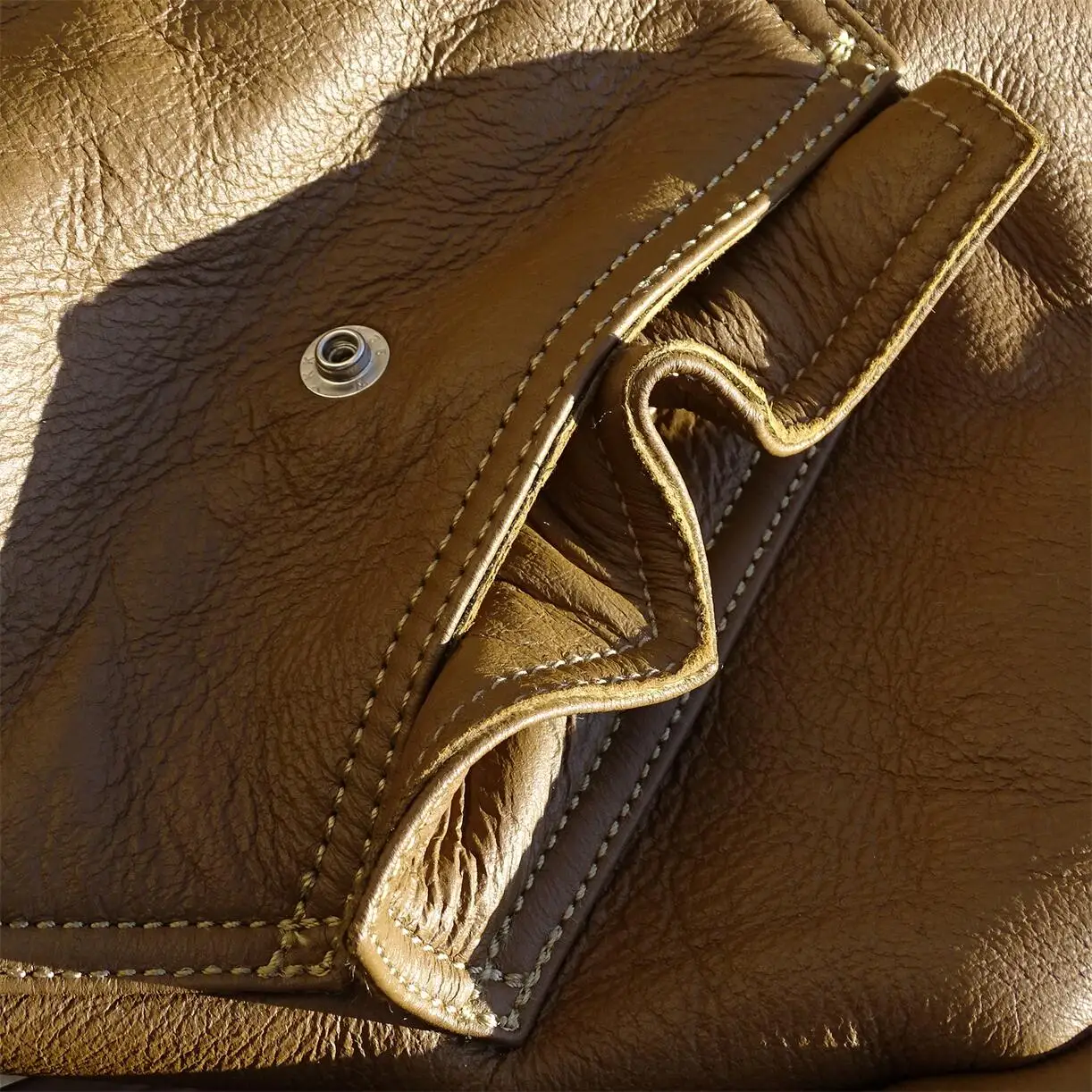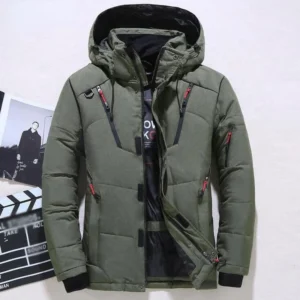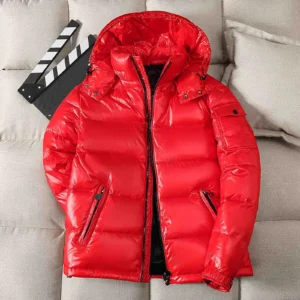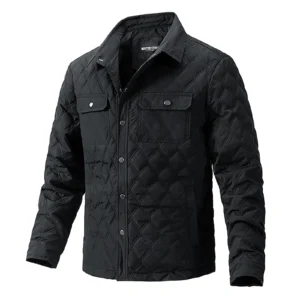Understanding the Difference: Shearling vs Sheepskin Defined
When shopping for a premium winter jacket, the terms “shearling” and “sheepskin” often appear interchangeably, but they’re not exactly the same thing. Understanding the distinction is crucial for making informed purchasing decisions.
Sheepskin refers to the hide obtained from mature sheep. It typically undergoes processing where the wool is either removed entirely or trimmed to a consistent length. This material is versatile and can be used in various applications from garments to home goods.
Shearling, on the other hand, is actually a specific type of sheepskin. It comes from younger lambs and is processed in a way that keeps the wool intact and attached to the hide. What makes shearling special is that it’s a unified material—the wool and leather remain connected as one piece, just as they were on the animal.
Many consumers mistakenly believe any wool-lined leather jacket qualifies as shearling. In reality, authentic shearling features the animal’s natural wool still attached to its hide, not separate components stitched together. This distinction affects not only the jacket’s appearance but also its performance, durability, and value.
The differences between shearling vs sheepskin comprehensive guide reveal important nuances that impact comfort, warmth, and investment value. Understanding whether sheepskin and shearling are the same helps ensure you’re getting exactly what you expect when purchasing a premium winter coat.
Key Characteristics: How to Identify Genuine Shearling
True shearling has several distinctive features that set it apart from other materials. The most fundamental characteristic is its unified construction—the wool and leather exist as a single piece rather than separate layers attached during manufacturing.
When examining genuine shearling, pay attention to these key identifiers:
- Unified Construction: The wool fibers grow naturally from the leather side—they can’t be pulled away from the hide without damaging the material.
- Wool Appearance: The wool side typically features dense, soft fibers with natural variations in color and texture. The wool might appear slightly wavy or crimped rather than perfectly straight.
- Leather/Suede Side: The hide portion should feel supple and feature natural grain patterns. It often has a velvety suede finish but can also be processed with the grain intact for a smoother appearance.
- Edges and Seams: When examining the edges and seams, you should be able to see both layers as one material. The cross-section reveals the transition from wool to leather as a natural gradient rather than a clear dividing line.
- Weight and Thickness: Genuine shearling has substantial weight and thickness while still remaining relatively flexible.
The qualities that make defining a classic shearling jacket special include this natural integration of wool and leather. Premium men’s shearling coats showcase these characteristics through careful craftsmanship that preserves the material’s natural properties.
What Makes Sheepskin Different: Distinctive Features
While shearling represents a specific type of sheepskin, regular sheepskin products offer their own distinct characteristics and processing variations. Understanding these differences helps you identify exactly what you’re getting.
Sheepskin can undergo various processing methods, resulting in different final products. Some sheepskin garments retain the wool, while others have it completely removed to use just the leather. When the wool remains, it’s often trimmed to a consistent length rather than keeping its natural variations as seen in shearling.
The texture of sheepskin varies significantly based on the age of the sheep and processing techniques. Mature sheep typically produce coarser, more robust wool compared to the softer, finer wool of young lambs used for shearling. This creates a noticeable difference in how the material feels against your skin.
Weight distribution in sheepskin garments also differs from shearling. Because sheepskin comes from older animals, the hide is usually thicker and more substantial, resulting in a heavier garment. The leather portion may be stiffer, especially in newly manufactured items, though quality sheepskin will soften with wear.
The versatility of men’s sheepskin coats comes from these processing variations, allowing for diverse styles from rugged outdoor wear to refined fashion statements, each with unique characteristics that distinguish them from shearling alternatives.
Visual Comparison: Shearling vs Sheepskin at a Glance
To simplify identification, here’s a side-by-side comparison of the key differences between shearling and regular sheepskin:
| Feature | Shearling | Regular Sheepskin |
|---|---|---|
| Animal source | Young lambs | Mature sheep |
| Wool characteristics | Fine, soft, naturally varying lengths | Often coarser, typically trimmed to uniform length |
| Hide properties | Thinner, more supple suede finish | Thicker, sometimes stiffer leather |
| Construction | Single unified piece (wool + hide) | May have wool removed or attached separately |
| Overall weight | Lighter despite thickness | Typically heavier |
| Typical applications | Premium jackets, cuffs, collars | Varied products including rugged outerwear |
| Price range | Generally higher ($800-$3000+) | Wider range ($300-$2000+) |
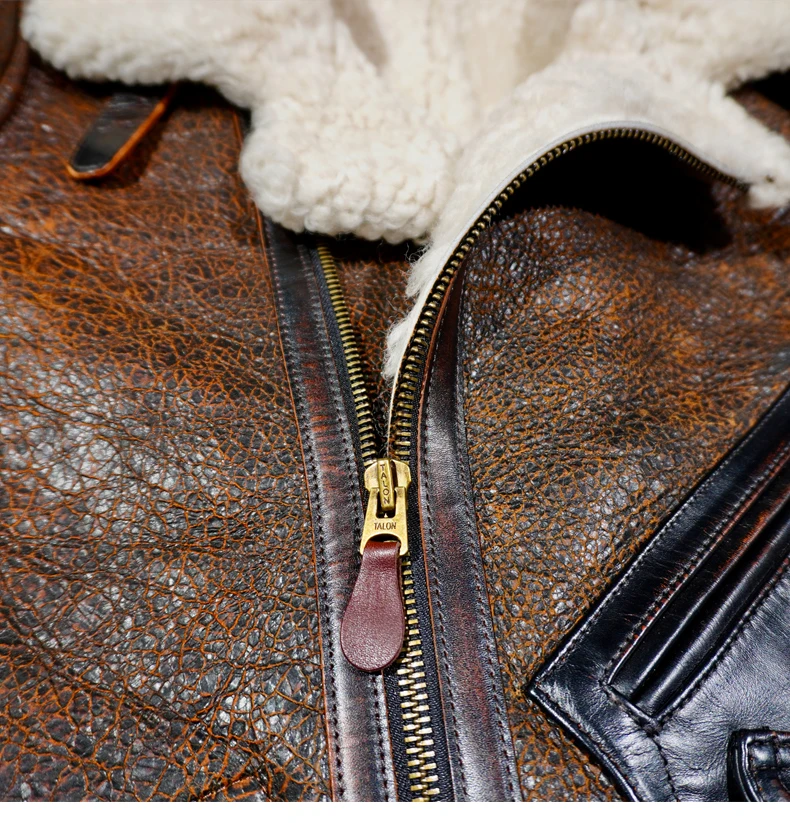
This visual reference highlights the shearling vs sheepskin key differences that matter most when identifying materials. These distinctions affect not only appearance but also performance, comfort, and value—important factors to consider before making a significant investment in premium outerwear.
Hands-On Test #1: The Visual Inspection Method
When trying to determine whether a jacket is made from genuine shearling or another type of sheepskin, a thorough visual inspection is your first line of assessment. Here’s how to conduct a proper examination:
Start by carefully inspecting the wool side. Genuine shearling wool grows in a slightly uneven pattern with natural variations in density and direction—similar to how hair grows on the human body. Look for these subtle inconsistencies, as perfectly uniform wool often indicates synthetic materials or separate wool layers attached to leather.
Next, examine the leather side. Authentic shearling typically features a suede-like finish with natural markings and slight color variations. The grain patterns should appear organic rather than stamped or artificially consistent. Some areas may be slightly thinner or thicker—nature’s signature of authenticity.
Pay special attention to the edges and seams of the garment. When looking at cross-sections (such as along an unfinished edge or inside a pocket), you should observe a natural transition between the wool and leather layers without any visible backing material or adhesive between them.
Material labels can provide helpful information but should not be your only verification method. Look for specific terminology like “genuine shearling” or “natural shearling lamb.” Be wary of vague terms like “shearling-style” or “sheepskin effect,” which often indicate imitation materials.
The diverse styles of men’s leather shearling coats showcase these authentic characteristics in various designs, from bomber jackets to full-length coats, each maintaining the inherent quality markers of genuine shearling.
Hands-On Test #2: The Touch and Feel Assessment
Nothing reveals the authenticity of shearling like a hands-on tactile assessment. This test relies on your sense of touch to identify genuine materials from imitations.
When you handle genuine shearling, the wool side should feel soft, dense, and slightly springy. Run your fingers through the fibers—they should move naturally and return to position without feeling synthetic or stiff. The wool will have a warm, insulating quality even before wearing the garment.
The leather side should feel supple and flexible with a natural give that synthetic materials can’t replicate. Quality shearling has a distinctive softness while maintaining structural integrity. The hide shouldn’t feel plastic-like or too perfectly smooth.
To perform the “unified material test,” gently try to separate the wool from the leather in an inconspicuous area. In genuine shearling, this should be impossible without damaging the material, as the wool fibers are naturally growing from the hide rather than glued or stitched to it.
Weight distribution is another telling factor. Authentic shearling has a substantial feel but distributes weight evenly throughout the garment. It should drape naturally on your body despite its thickness, unlike synthetic alternatives that might feel disproportionately heavy or unusually light.
The superior insulation properties described in our shearling vs sheepskin winter warmth guide explain why these materials feel different when handled—genuine shearling traps air between its fibers in a way that imitations simply cannot duplicate.
Hands-On Test #3: Advanced Verification Methods
For those seeking definitive proof of material authenticity, several advanced testing methods can provide additional verification:
The Burn Test (with caution): Remove a few loose fibers from an inconspicuous area and burn them safely using tweezers and a flame-resistant dish. Natural wool fibers will smell like burning hair, curl away from flame, and leave dark ash. Synthetic fibers melt rather than burn and emit a chemical odor. Note: Only perform this test on loose fibers, never on the jacket itself.
Backing Material Examination: Check hidden areas such as inside pockets or under flaps. Genuine shearling will show the same construction throughout, while imitations often reveal backing fabrics or adhesives in these less visible areas.
Manufacturing Certification: Premium shearling jackets often come with certificates of authenticity or specific tags identifying the material source and processing methods. Look for details about the tannery or manufacturing region.
Age Assessment: Vintage shearling develops a distinctive patina over time. The leather darkens slightly while the wool compresses in areas of frequent contact. This natural aging is difficult to artificially replicate in synthetic materials.
Professional Verification: For valuable pieces or significant investments, consider consulting a leather specialist or furrier who can provide expert assessment based on years of handling authentic materials.
These verification methods complement the guidance found in our timeless shearling coat guide, which emphasizes quality assessment as a crucial factor in selecting investment-worthy outerwear pieces.
Spotting Fakes: Red Flags for Imitation Materials
As demand for premium outerwear increases, so does the market for imitation products. Knowing how to spot fakes can save you from a disappointing purchase:
Key warning signs include:
Separate Construction Layers: If you can see or feel a distinct backing material between the wool and leather layers, it’s not genuine shearling. Authentic shearling is a single piece of material with the wool naturally attached to the hide.
Unnatural Uniformity: Perfectly even wool length and density throughout the entire garment suggests machine-made synthetic materials. Natural shearling has subtle variations in texture and density.
Suspicious Pricing: Genuine shearling requires significant materials and craftsmanship. If a “shearling” jacket is priced suspiciously low (under $500), it’s likely not authentic. Quality shearling represents a legitimate investment.
Misleading Terminology: Watch for descriptors like “sherpa,” “sherpa-lined,” “faux shearling,” or “shearling-style”—these explicitly indicate synthetic alternatives.
Shiny or Plastic-Like Appearance: The leather side of authentic shearling has a natural matte finish. Excessive shine or a plastic-like appearance signals synthetic materials.
Chemical Odors: Natural shearling has a subtle leather smell. Strong chemical odors suggest artificial materials and dyes.
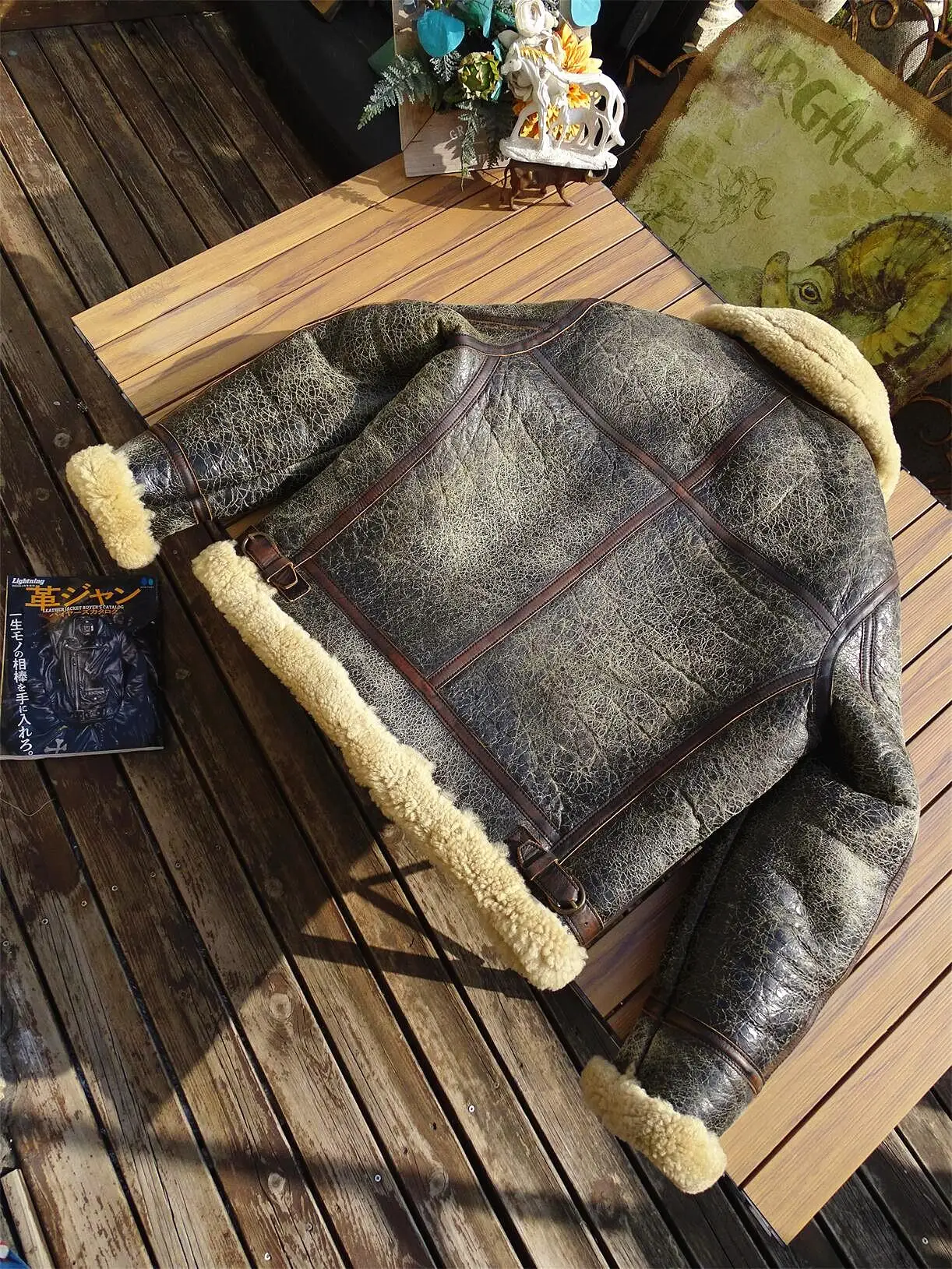
Why Material Authentication Matters: Performance Differences
Understanding whether your jacket is genuine shearling or regular sheepskin isn’t just about avoiding counterfeits—it directly impacts how your garment will perform and last over time.
Genuine shearling offers exceptional insulation properties. Its unique structure creates tiny air pockets that trap body heat while still allowing moisture to escape. This natural breathability keeps you warm without overheating, unlike many synthetic alternatives that can become uncomfortably hot or clammy.
Durability differences are also significant. Quality shearling can last decades with proper care, developing character while maintaining functionality. The unified construction prevents separation issues that can plague lesser materials where layers might begin to detach after repeated wear.
Comfort against skin is another key distinction. The natural lanolin in genuine wool provides inherent softness and can even help condition both the wool and leather components over time. This creates a jacket that becomes more comfortable with each wearing rather than breaking down.
Weather resistance varies between materials as well. As explored in our shearling vs sheepskin cold weather guide, genuine shearling offers natural water resistance and performs exceptionally well in cold, dry conditions, while certain processed sheepskins might provide better protection in damp environments.
Care Considerations Based on Material Type
Proper maintenance extends the life of your investment piece, but care methods differ significantly based on whether your jacket is shearling or regular sheepskin:
| Care Aspect | Shearling | Regular Sheepskin |
|---|---|---|
| Cleaning | Spot clean with specialized shearling cleaner; professional cleaning recommended for significant soiling | May be more receptive to gentle home cleaning with sheepskin-specific products |
| Drying | Air dry away from direct heat; never use a clothes dryer | Similar air drying requirements, but may take longer due to typically thicker material |
| Brushing | Use a soft-bristled brush for wool side to maintain loft | May require more vigorous brushing to maintain appearance |
| Storage | Breathable cloth garment bag in cool, dry place; never use plastic covers | Similar storage needs but less susceptible to wool compression |
| Conditioning | Occasional professional conditioning to maintain hide suppleness | May require more frequent conditioning, especially for heavily processed hides |
Understanding these care differences ensures your premium outerwear remains in excellent condition. For an extensive collection of outerwear requiring different care approaches, explore our selection of men’s leather coats featuring various materials and constructions.
Mens Heavy Winter Coat, Mens Insulated Coat, Mens Parka Coat
Price range: $175.52 through $237.36 Select options This product has multiple variants. The options may be chosen on the product pageMens Big and Tall Winter Coats, Mens Down Coat, Mens Hooded Winter Coat, Mens Puffer Coat
Price range: $126.44 through $217.01 Select options This product has multiple variants. The options may be chosen on the product pageMens Big and Tall Winter Coats, Mens Hooded Winter Coat
Price range: $80.32 through $106.68 Select options This product has multiple variants. The options may be chosen on the product pageMens Cashmere Overcoat, Mens Hooded Winter Coat, Mens Wool Blend Coat
Price range: $128.72 through $139.68 Select options This product has multiple variants. The options may be chosen on the product pageMens Hooded Winter Coat, Mens Insulated Coat, Mens Puffer Coat, Mens Quilted Coat
Price range: $139.88 through $177.72 Select options This product has multiple variants. The options may be chosen on the product pageMens Double Breasted Pea Coat, Mens Hooded Winter Coat, Mens Quilted Coat
Price range: $81.00 through $108.48 Select options This product has multiple variants. The options may be chosen on the product page
Is Your Investment Worth It? Value Assessment Guide
Determining whether a shearling or sheepskin jacket justifies its price tag requires evaluating several quality indicators:
High-quality shearling displays exceptional hide suppleness with no stiff or cardboard-like areas. The wool should feel dense and luxurious with secure attachment to the hide. Look for even coloration (or intentional, controlled variations) rather than blotchy or inconsistent dye work.
Construction quality proves equally important. Examine the seams for tight, even stitching with no loose threads. Quality garments typically feature leather-bound seams rather than exposed edges. Hardware elements like zippers and buttons should feel substantial and operate smoothly.
Long-term value considerations favor genuine shearling over regular sheepskin for investment pieces. While the initial cost is higher, authentic shearling’s longevity often provides better value over time. Many quality shearling coats can last 20+ years with proper care, developing character while maintaining functionality.
Resale potential also factors into value assessment. Premium shearling from respected manufacturers tends to retain value better than processed sheepskin or synthetic alternatives. For collectors’ pieces or limited editions, value may even appreciate over time—a rare quality in modern clothing items.
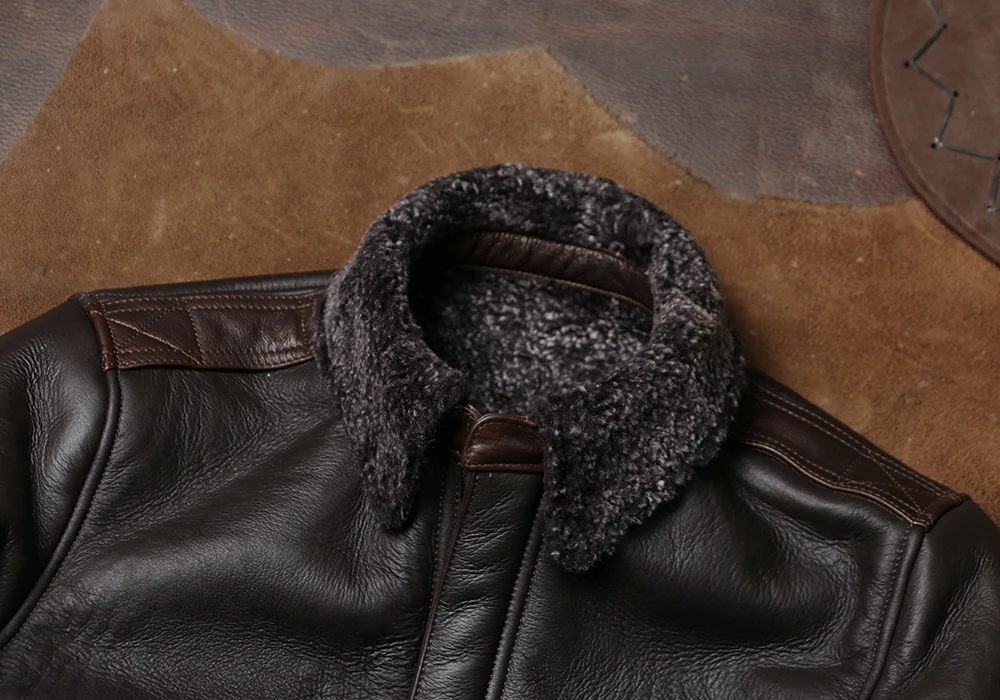
When to Consult a Professional: Expert Authentication
While the identification methods outlined above work well for most situations, certain scenarios warrant professional assessment:
Consider expert authentication for vintage or antique pieces where age makes visual identification challenging. Similarly, if you’re contemplating a significant investment in a premium jacket, professional verification provides valuable peace of mind.
Leather specialists, experienced furriers, and vintage clothing experts offer the most reliable authentication services. These professionals have handled thousands of genuine items and can quickly spot inconsistencies that might escape untrained observation.
During professional authentication, experts will examine construction techniques, material characteristics, and often the provenance (history and documentation) of the item. Many can also provide approximate age estimation and value assessment for vintage pieces.
For everyday outerwear options including both authentic and alternative materials, browse our selection of men’s winter coats featuring diverse options for various preferences and price points.
Buying Guide: Questions to Ask Before Purchase
When shopping for shearling or sheepskin jackets, asking the right questions helps ensure you get authentic quality:
“Is this genuine shearling with the wool naturally attached to the hide, or is it a constructed garment with separate components?” (The answer should clearly indicate natural, unified construction for true shearling)
“What type of sheep or lamb was used, and where was the material sourced?” (Quality manufacturers can typically provide specific information about their materials)
“How was this material tanned and processed?” (Traditional methods generally produce better results than accelerated chemical processes)
“What kind of care will this garment require?” (The seller should provide specific maintenance instructions)
“Does this come with any authentication or material certification?” (Premium items often include documentation)
Watch for vague responses or reluctance to provide specific information. Quality sellers understand their products and willingly share details about materials and construction. Be particularly cautious if a seller avoids questions about whether the wool and leather are naturally connected or artificially combined.
Documentation becomes increasingly important as price increases. For premium items, request written information about the material source, processing methods, and care instructions before finalizing your purchase.
Frequently Asked Questions About Shearling and Sheepskin
Is shearling always more expensive than regular sheepskin?
Generally yes, but with exceptions. Genuine shearling typically costs more because it comes from younger animals and requires more specialized processing to maintain the unified wool-hide construction. However, premium quality sheepskin from rare breeds or with specialized processing can sometimes exceed basic shearling pricing.
How long should a quality shearling jacket last?
With proper care, a well-made shearling jacket can last 20-30 years or longer. Many become family heirlooms, developing character while maintaining functionality. Regular sheepskin typically has a shorter lifespan but still offers excellent durability compared to synthetic alternatives.
Are there sustainable or ethical sources for these materials?
Yes. Look for manufacturers who source from responsible farmers practicing ethical animal husbandry. The most ethical shearling practices involve using hides from animals already raised for meat production, ensuring the entire animal is utilized. Some producers also maintain transparent supply chains and humane certification.
Can imitation materials ever match the performance?
Modern synthetic alternatives continue improving but still can’t fully replicate all natural properties. While some high-quality faux options offer comparable warmth, they typically lack the breathability, moisture management, and longevity of genuine materials. Synthetic options do provide alternatives for those with ethical concerns about animal products.
Do shearling and sheepskin require different cleaning methods?
Yes. Shearling’s unified construction necessitates specialized cleaning approaches that treat both the wool and leather simultaneously. Regular sheepskin, especially when the wool has been removed, can sometimes tolerate more conventional leather cleaning methods. Always follow manufacturer recommendations and consider professional cleaning for valuable pieces.

